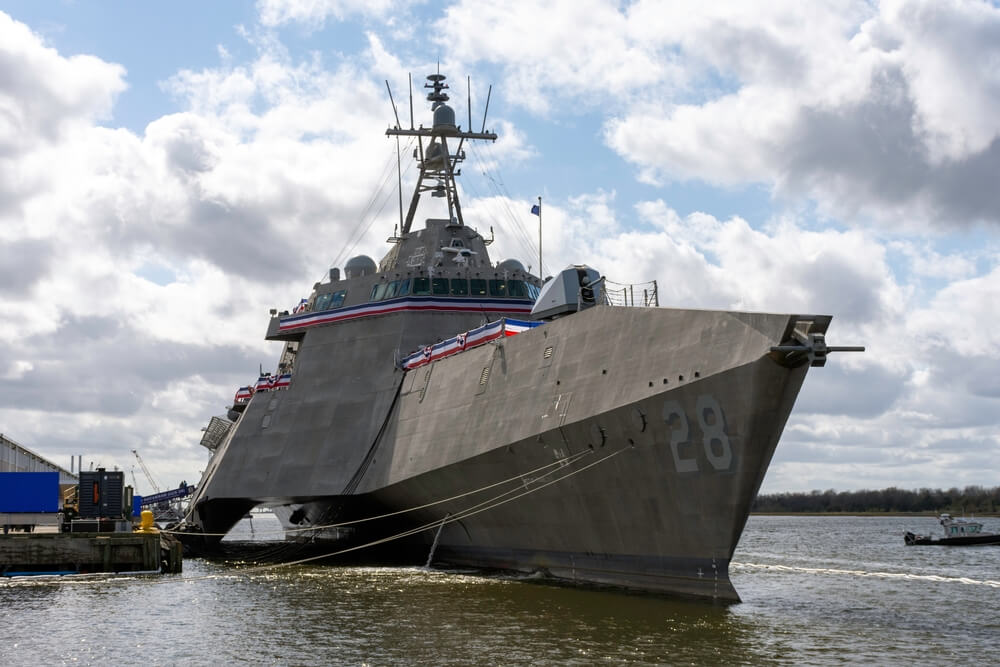Among the first actions it takes in the Pentagon, the incoming Trump administration should commission a top-to-bottom review and reform of the Navy bureaucracy that develops new warships.
The recent history of U.S. Navy surface warship building has been in many ways a mixed bag of successes like the transition to the Flight III Arleigh Burke class destroyer and severe challenges such as the Littoral Combat Ship and the new Constellation-class frigate.
Where were the naval architects within Naval Sea Systems Command (NAVSEA) to call out the LCS program for trying to add too many new systems and concepts in just one generation of naval vessel? Where were the managers who should have put the brakes on the Navy transforming the successful FREMM frigate design operated by several U.S. allies into a brand new design for the Constellation class?
These issues are deeply buried within the organization, regulation of and staffing of NAVSEA over decades and should not be blamed on recent NAVSEA leadership. But the bottom line is that the U.S. can’t build a warship on time and on budget. And with conflict a distinct possibility in the near term, that is unacceptable and only invites danger.
A history of costly errors
The Congressional Research Service and Congressional Budget Office regularly highlight the challenges in Navy shipbuilding, yet the issues they identify occur again and again in new construction.
The LCS was intended as a very low cost, $250 million ship, yet due to its many immature systems that could not pass operational testing, the ship’s cost ballooned to over three times the initial assessment. Naval architects within NAVSEA should have identified these challenges before LCS went into serial production, yet much of this discipline is no longer resident in the organization, having been transferred out in acquisition reforms in the 1990’s, when 75% of naval architecture positions in NAVSEA were eliminated.
The old adage goes, “You forget what you hear, you remember what you see, and you know what you do.” Because NAVSEA is not doing ship design, it is missing an opportunity to pass on corporate engineering knowledge to the next generation of ship designers, ship design managers and design integration managers. In contrast to the Navy, commercial shipbuilders have staff with naval architects in numbers that assess designs. They also complete all design work before cutting and bending metal.
Recent issues with the Constellation-class frigate suggest the replacement for trained naval architects has been an autopilot systems of regulations that made major changes to the parent FREMM design.
The National Defense Authorization Act conference report for fiscal 2021 presciently reported:
“The conferees note that the winning Constellation-class ship design is based on a foreign design. While recognizing an existing parent design can reduce design, technical and integration risks, the conferees are concerned that significant risks remain in the FFG-62 program, including: cost realism; shifting to predominantly U.S. component suppliers instead of the mainly foreign suppliers used in the parent vessel design; and a complex Combined Diesel Electric and Gas Hull, Mechanical and Electrical (HM&E) drive train that has not previously been used on U.S. Navy ship.”
FREMM is by all accounts a good design that operates very well in allied navies. It could also operate well in the U.S. Navy. The service, however, made a conscious choice to buy it with many caveats that would increase its baseline price and construction time. FFG-62 now won’t be delivered before 2029, with the first unit at $1.4 billion. Perhaps the Navy should have bought the proven FREMM design without major changes.
A recipe for fixing NAVSEA
The Navy and the nation can ill-afford a lack of trained overseers, and crippling regulations that dramatically raise costs and delay construction of its warships. It needs a get-well plan as soon as possible. Here are a range of suggestions:
— Take a cue from the Maritime Administration. The National Security Multi-mission Vessel (NSMV) academy training ship design, which is under construction at Philly Shipyard, uses the vessel construction manager process to adjudicate issues of design and building between the shipyard and the Maritime Administration.
Rather than another government agency as the “middleman” between the yard and the government in questions on the build, a private contractor, TOTE Services, serves as the adjudicator between the government and the yard. It’s a process that’s working as the first two NSMV’s have been delivered with very little cost overrun or delay in the build, as opposed to the significant delays seen in LCS and now the Constellation class. A range of lessons learned about shipbuilding management employed by the Maritime Administration should be considered by the incoming Trump administration
— Do a sweeping review. The incoming civilian Navy leadership should appoint a commission to study NAVSEA in detail in terms of its regulations, personnel staffing and relationships with civilian shipyards. The review should be done quickly – three months at most – because the nation’s security depends on it. Then the commission should make recommendations to Congress on legislation to alter NAVSEA for more effective and less costly operations ahead of the potential for conflict with peer opponents.
— Hire more naval architects. Naval architects should assess designs up front, and better management of design regulations is needed to help prevent changes that cause construction delays and increased costs. Better management processes like the VCM model can help to keep production on budget and on time.
If conflict is truly on the horizon by the end of the decade, then a review of NAVSEA’s staffing, regulations and management processes is essential in preparing the U.S. Navy for a dangerous future and ensuring its hard-won funding is not squandered in process failures.
The warnings have sounded since the early 1990’s and its now past time to act.







